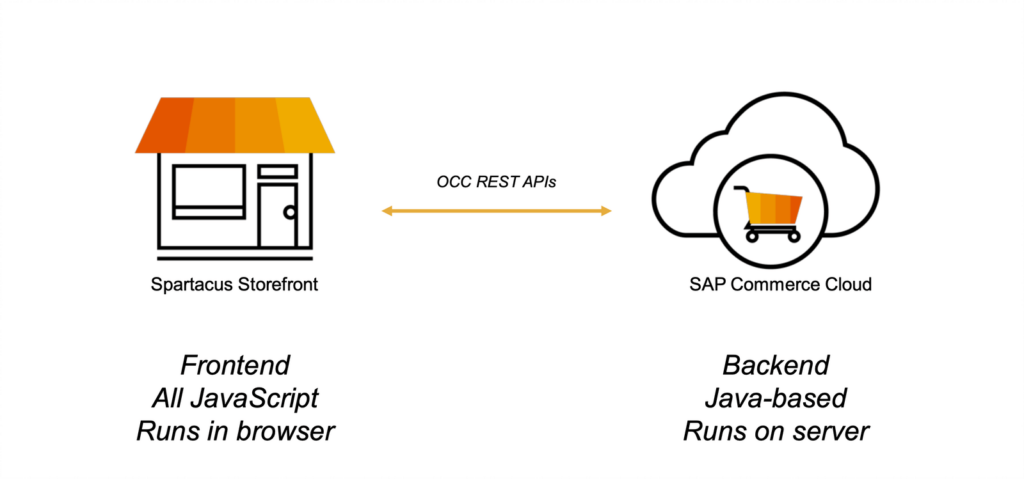Separation of frontend and backend
Since frontend and backend are now encapsulated in completely different projects (ideally in different git repositories as well), both projects can be deployed independently of each other. So, if the only changes are in the frontend, they can go live without significant downtime. It is also possible to split frontend and backend tasks between specialized teams and, thus, ensure more independent work.
Semantic versioning
The separation of frontend and backend also means that the Spartacus storefront can receive updates independently from the backend. The Spartacus team is focused on supporting semantic versioning. This means that incompatibilities with older versions are only caused by major releases. Updates are easier than ever and are performed via the Node Package Manager (NPM).
Open Source
Spartacus is an open-source project of SAP, which is based on Angular. GitHub provides access to the source code and allows developers to actively contribute to Spartacus, report bugs, and suggest improvements. Furthermore, a separate tag for Spartacus was created at https://stackoverflow.com/questions/tagged/spartacus-storefront. Answers to technical questions are therefore not typically hidden behind the SAP help or experts portal but are indexed by search engines and, thus, easier to find. A Slack channel is also used to publish news and take questions from the developer community.
Component-based architecture
Since Spartacus is based on Angular, Spartacus is also built on a component and module-based architecture. This enables standard components to be very easily configured, extended, or completely replaced by means of ConfigModules and so-called Outlets. Style sheets can be encapsulated by components, which encourages component reusability.
Challenges
Nevertheless, Spartacus did bring some challenges, from which our development team learned a lot. Due to the early introduction of Spartacus, the team also had to struggle with teething troubles. The documentation was incomplete at first because the framework was actively being worked on. However, our team actively supports the community and helps to improve Spartacus.
Curious?
Are you planning a new project with SAP Commerce Cloud, or planning an upgrade? Spartacus is the right choice! Come and visit us and if you like, we will show you our demo scenario free of charge.

